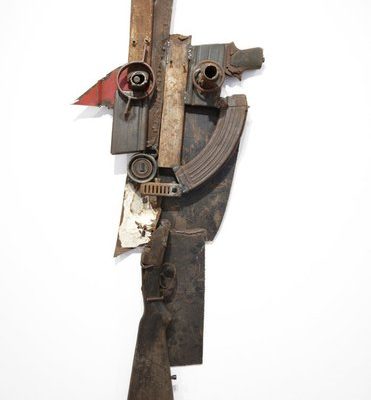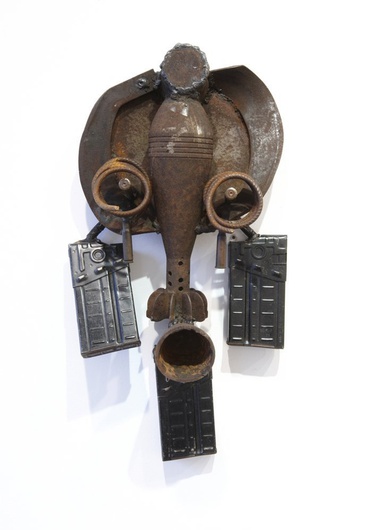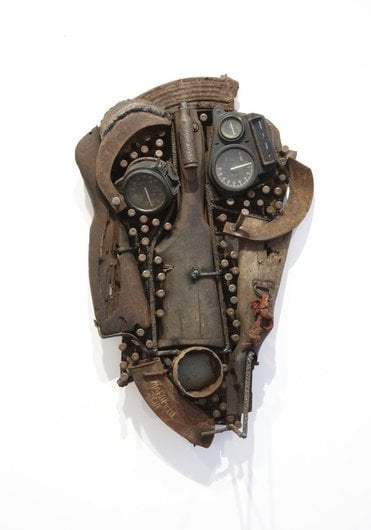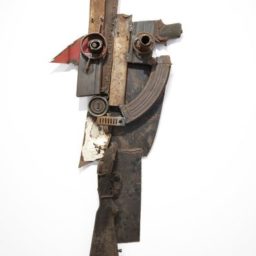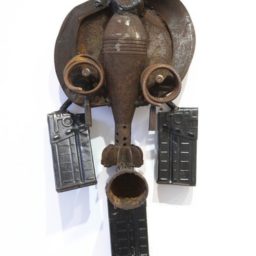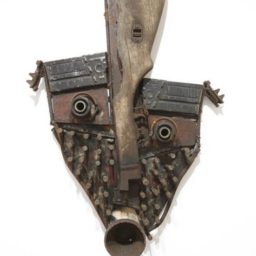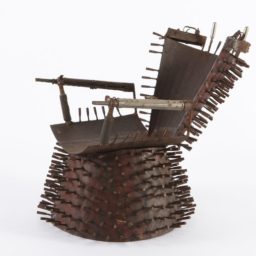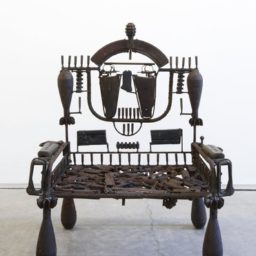Mozambique’s tumultuous modern history has long informed its rich art scene. After gaining independence from Portugal in 1975 after a decade-long struggle, a brutal 16-year civil war consumed the country. Although the nation has now enjoyed peace for 20 years, the legacy of these conflicts continues to pervade Mozambican culture.
Acclaimed sculptor Gonçalo Mabunda uses discarded or found weapons as materials for his art. The unusual practice was reportedly triggered by a 1995 campaign, Transforming Guns into Hoes, launched by a union of Christian churches, which sought to encourage gun owners to turn in weapons in exchange for building and farming supplies.
The initiative successfully recovered or recycled 800,000 weapons. Mabunda told CNN “If we destroy the weapons, the same weapon’s not going to kill anymore,” he explained that his art is “trying to represent each [person] who died with this same material.”
Best known for his thrones, the African artist recently started experimenting with masks made in the African tribal tradition constructed with discarded bullets and gun parts. Mabunda’s London dealer Jack Bell said the works “were responded to extremely well.” He explained that “they certainly play on form from traditional African art, but have a strong connection to modern and contemporary art,” and compared the works to Picasso, Dubuffet and Braque.
Follow Artnet News on Facebook:
Want to stay ahead of the art world? Subscribe to our newsletter to get the breaking news, eye-opening interviews, and incisive critical takes that drive the conversation forward.
